
There are so many Quiche Lorraine recipes floating around, at first I thought, “Why bother doing another one?” But then I realised that Quiche Lorraine is a French dish, so let’s get down and reveal those basic French techniques that make this recipe such a classic!
To make the pastry crust for a quiche, it’s easy to just pop the flour and butter in a food processor, pulse for a few seconds, add the egg and water and let the machine turn out a ‘perfect dough’ for you. But here are a few techniques I leaned at the Cordon Bleu School in Paris that will help you to make an authentic Quiche Lorraine. In the words of Julia Child, “A good French pastry crust should be tender, crunchy and buttery.”
To make a good French pastry dough, your hands, fingers and arm become active, first rubbing the butter and flour together with your palms, then ‘kneading’ the dough using the heel of your hand, ending with a perfect ball of dough. Almost feels like a gym workout after you’ve finished!
P.S. If you enjoyed this post, please do ‘like’ my G’day Souffle’ Facebook page!
Method for Making the Dough for the Quiche Lorraine
Recipe adapted from Le Cordon Bleu school
Ingredients
- 100 g (8 Tbsps or 1/2 cup) cold butter, cubed
- 200 g flour (1 1/2 cups)
- pinch salt
- 1 egg
- 2 – 3 tbsp. cold water
Step 1 – Sabler the butter and flour together
Cut the cold butter into cubes and then add to the flour and salt in a large bowl. Rub the butter and flour together briskly between the palms of your hands and tips of your fingers until it becomes like sand. Since sable is the word for ‘sand’ in French, this technique is called sabler.
The end result: your dough should resemble fine sand.
Step 2 – Make a well in the middle of the dough and add 1 egg.
Step 3 – Mix the ingredients and transfer to your work surface
Mix the egg into the flour/butter mixture, then add 2 – 3 tbsp. cold water. The dough should be moist and be able to hold together its shape. Transfer the rough dough mixture onto a floured surface and gather into a mound shape, using the aid of a pastry scraper.
Step 4– Fraiser the dough on the work surface.
Using the heel of your hand, push one portion of the dough along the work surface with an outward movement. Regather the dough using the aid of the pastry scraper. Repeat several times until the dough comes together into a firm ball. This technique is called fraiser la pâte or le fraisage (the final blending of flour and butter).
Fraiser la pâte : Push a portion of the dough away from you, using the heel of your hand.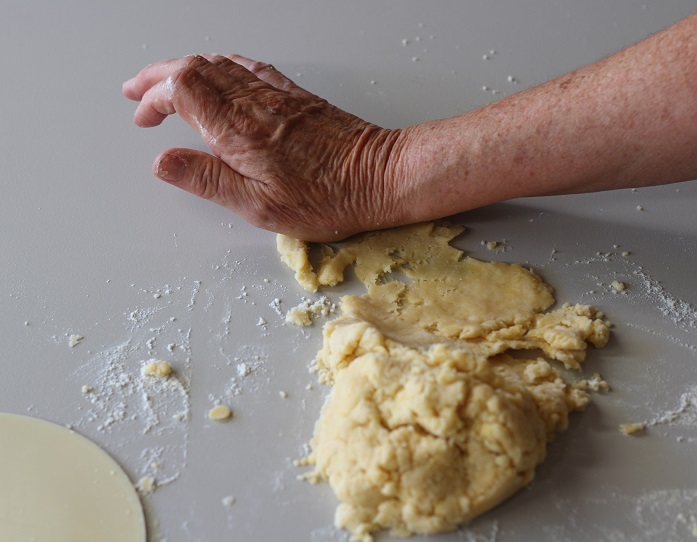
Repeat several times until you form a firm dough ball. Wrap the dough in plastic and chill in the fridge for at least 30 minutes or longer until firm.
Next steps: roll out the dough on a floured surface, turning the dough 1/4 turns as you go. Roll the dough so that it overhangs 2 cm over the edge of the quiche tin.
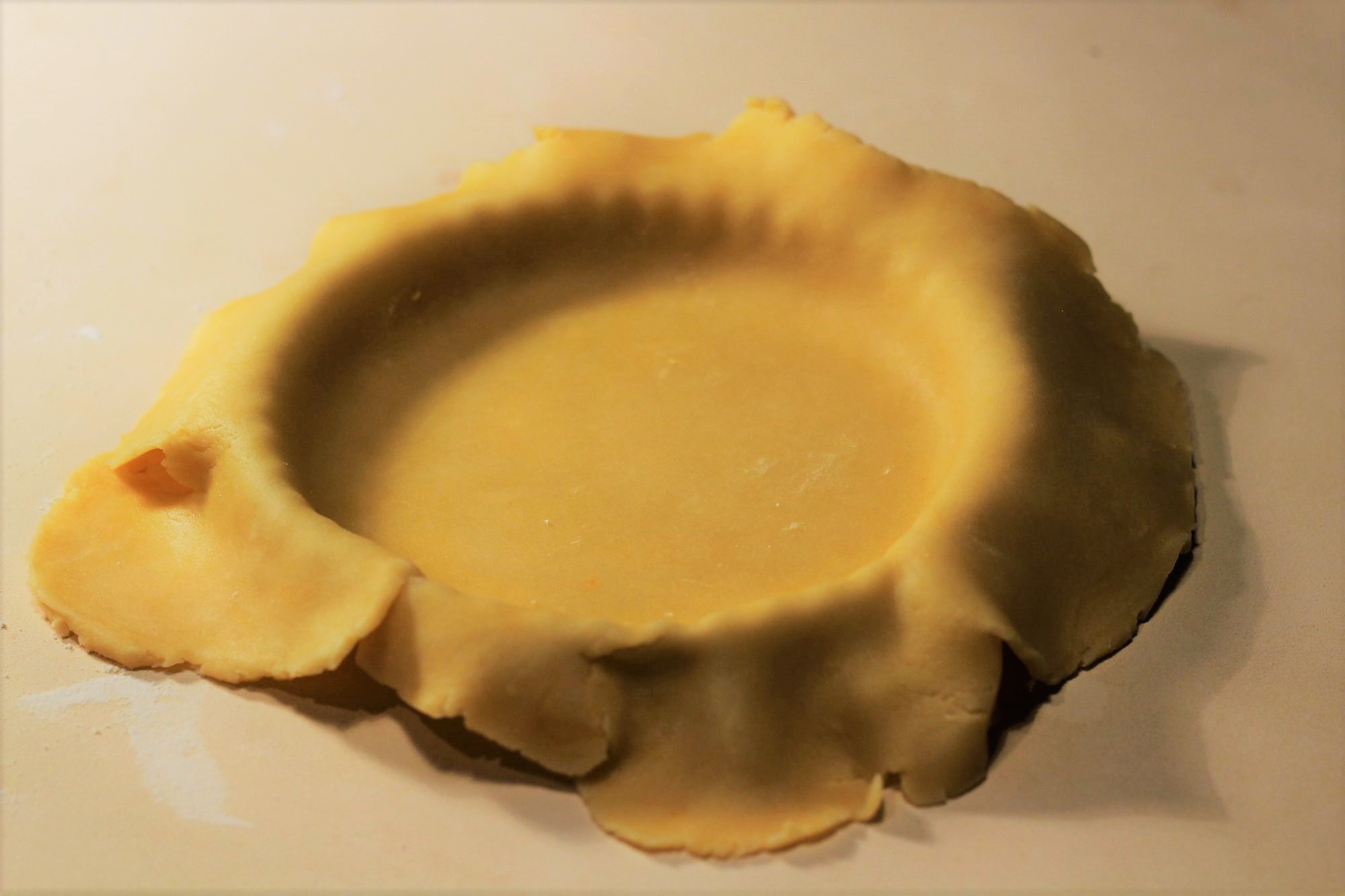
Next, pass a rolling pin across the top of the quiche mould so that it cuts through the dough and then lift the excess dough away from the mold.
Prick the dough with the ends of a fork, add parchment paper and pie weights to the quiche tin, then blind bake for 15 minutes (see instructions for my post on White Chocolate Tart with Cherries in Red Wine Sauce).
You’re now ready to add the quiche filling to complete your delicious authentic Quiche Lorraine!
- For the Shortcrust Pastry:
- 200 g flour (1.5 cups)
- 100 g cold butter (1/2 cup or 8 Tbsps)
- Pinch salt
- 1 egg
- 2 tbsp cold water (more, if required)
- Filling
- 180 g smoked speck bacon, cut into cubes (3/4 cup)
- 100 g Gruyère cheese, grated (1 cup)
- 3 eggs
- 125 ml thickened cream (1/2 cup)
- 125 ml whole milk (1/2 cup)
- Salt, pepper
- Nutmeg
- Pre-heat oven to 180 C.(360 F)
- In a large bowl, add the flour and salt. Cut the cold butter into small cubes then add to flour mixture. Rub the butter and flour between the palms of your hands until it becomes like sand.
- Make a well in centre of the flour mixture- add the egg into well and stir; add the cold water a little at a time.
- Form the dough into a ball and then push the dough out away from you on the countertop, using the palm of your hand (le fraisage). Cover the dough with plastic and place in fridge for at least 30 minutes, or longer.
- Roll-out the dough making occasional quarter turns- leave 2 cm margin larger than the quiche mould. The dough should be about 1/8 inch thick.
- Drape the dough over the mould leaving the 2 cm margin- gently push the dough down to fit the shape of the mould. Prick bottom of crust with a fork.
- To blind bake the dough:
- Place parchment paper inside of mould and fill with pie weights or raw rice. Bake in oven for 15 minutes until the crust is light brown in color. Remove pie weights and let dough cool.
- Remove rind and cartilage from the bacon slab- cut into small cubes . Slightly brown the bacon bits with a little butter, over medium high heat and then drain on kitchen paper.
- Grate the Gruyère cheese and place it on bottom of baked quiche dough, then add the bacon bits.
- Prepare the filling: beat 3 eggs together, then add the cream, milk, nutmeg, and salt and pepper to the mixture. Add this to the cooked quiche dough then top with a little more of the grated cheese.
- Bake for 30-40 minutes until the custard filling feels firm to the tough, but not hard.
- Let the quiche cool then remove the bottom from the quiche tin.
- Place chopped parsley garnish on top of quiche and several small pieces of bacon- this will also serve to identify the type of quiche you have just made.

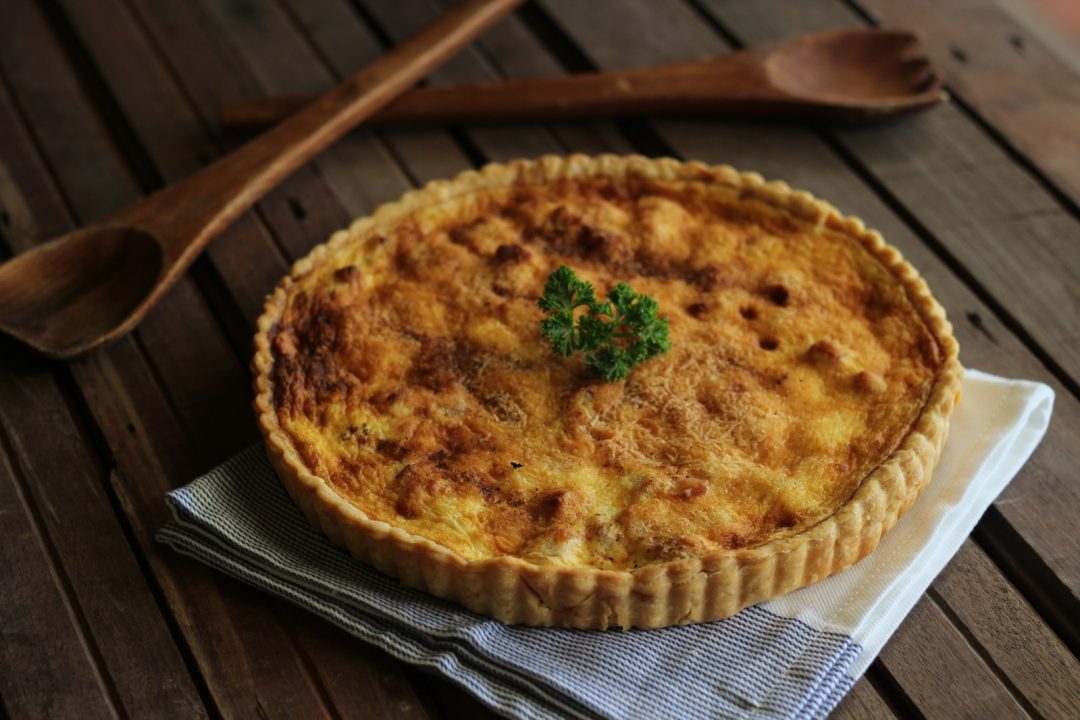
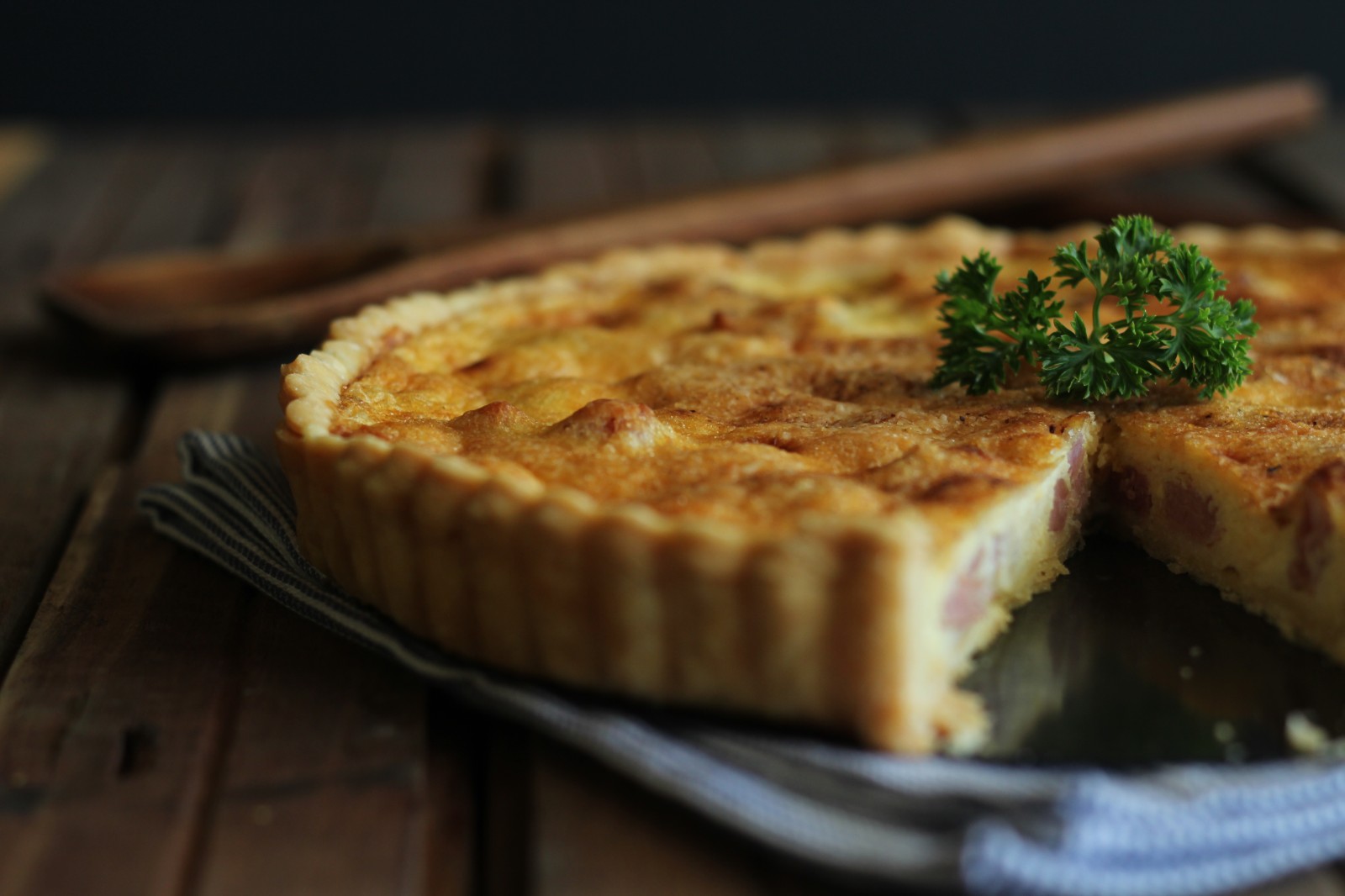

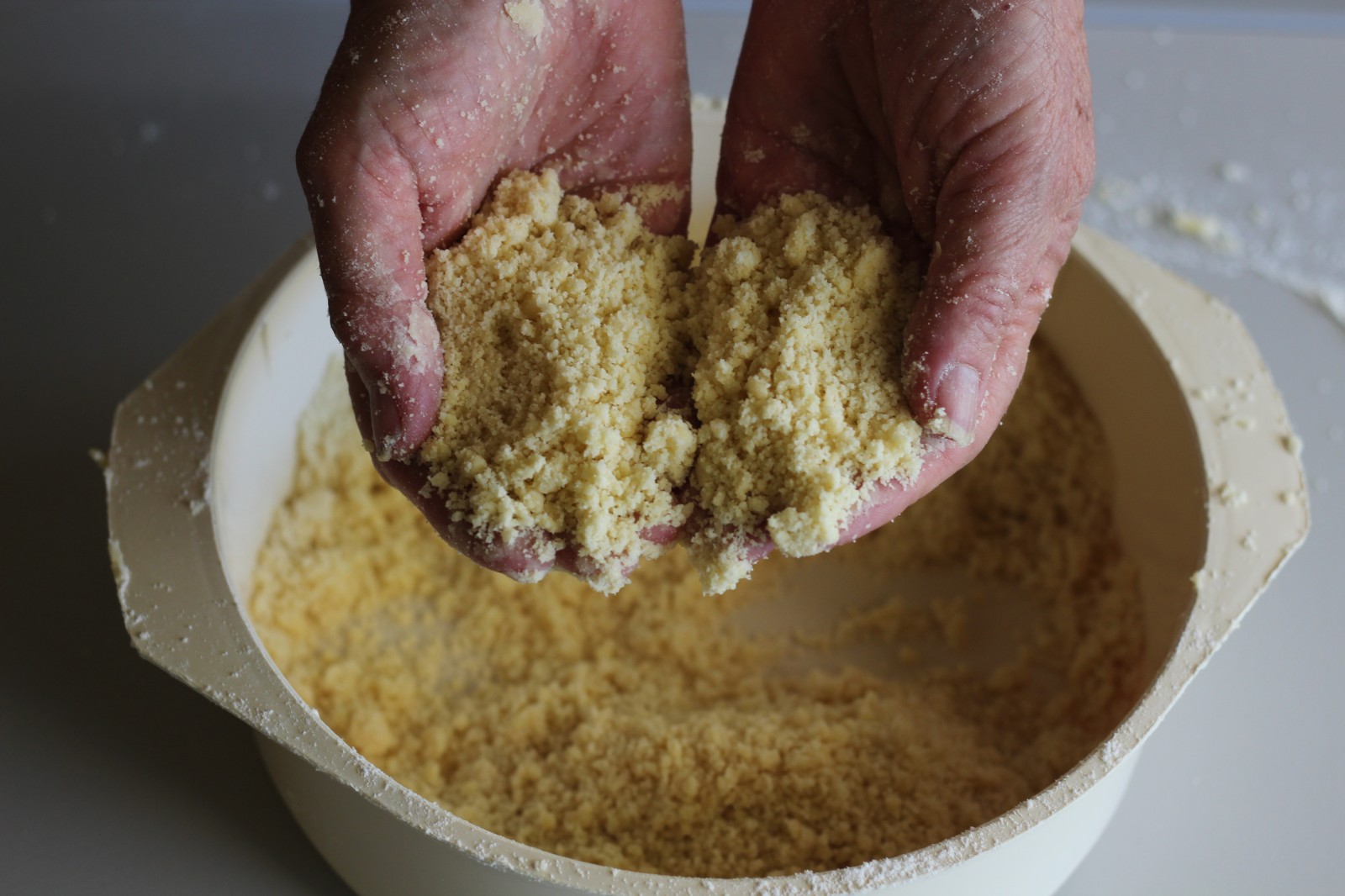
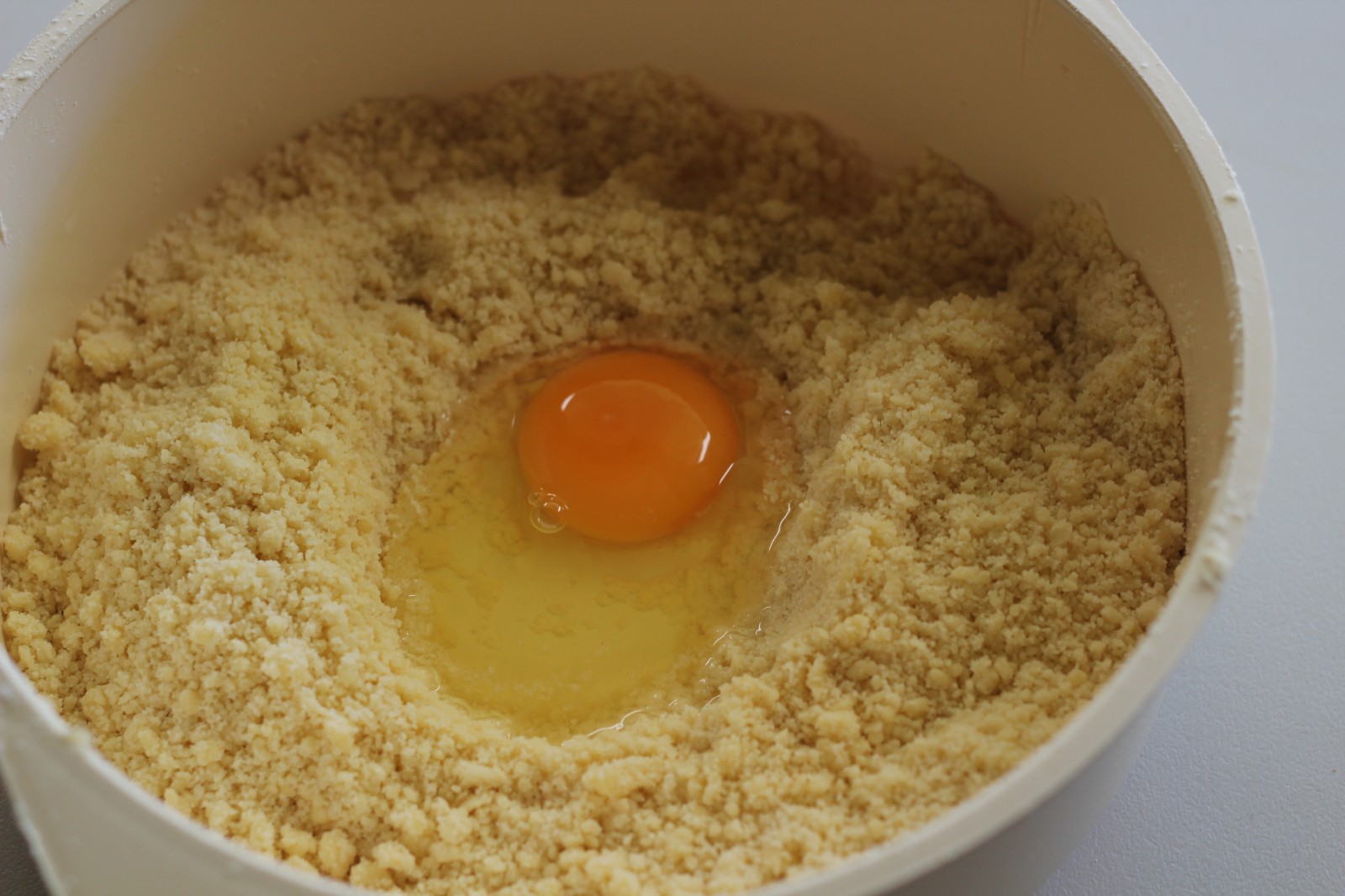
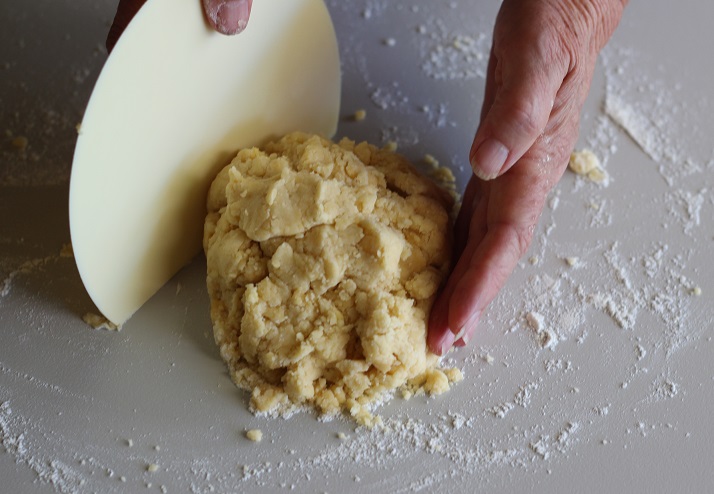
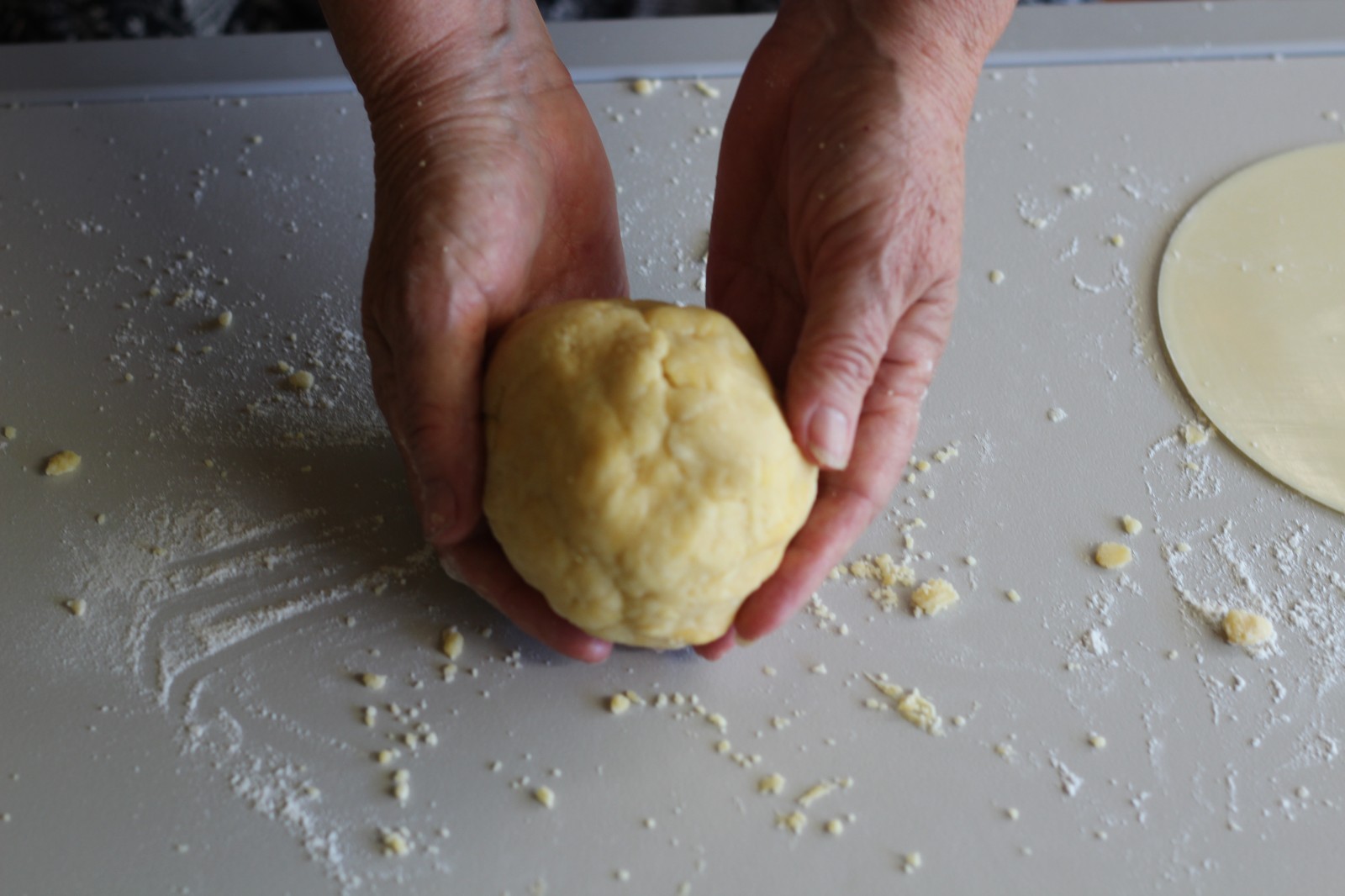
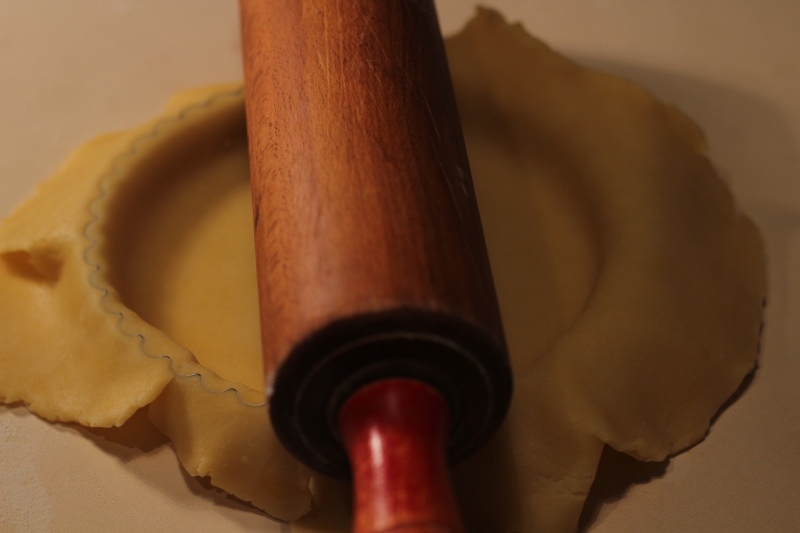
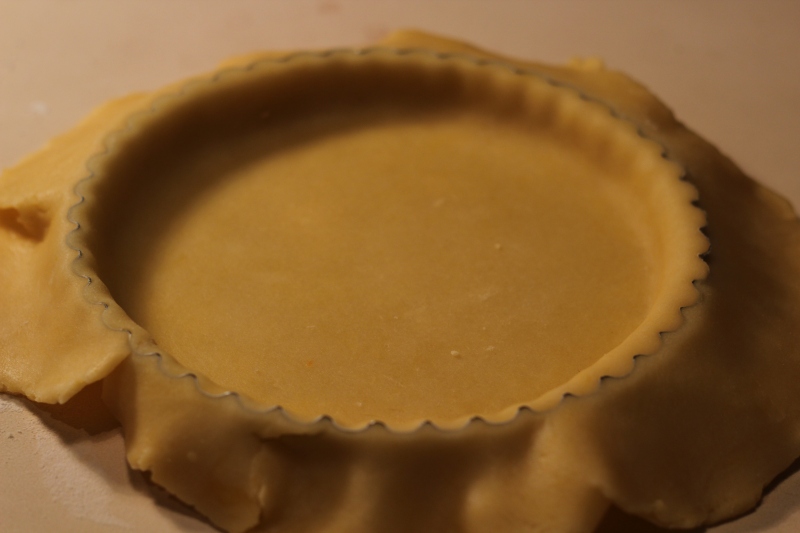
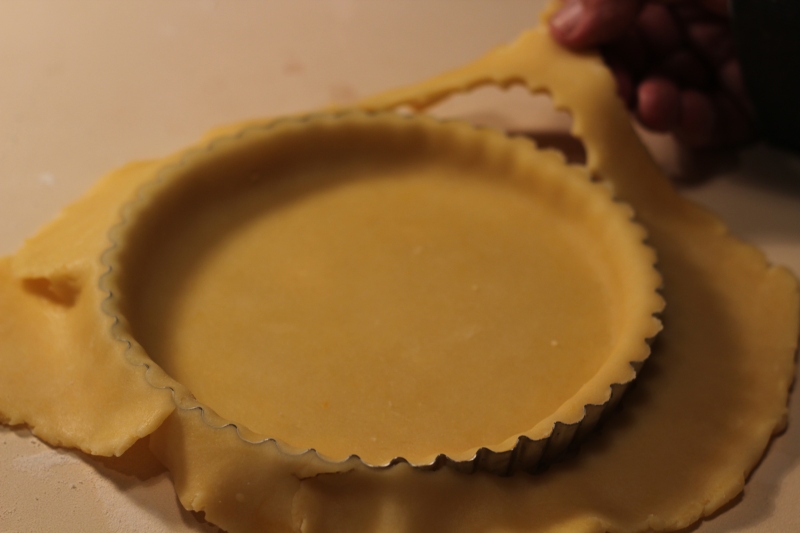


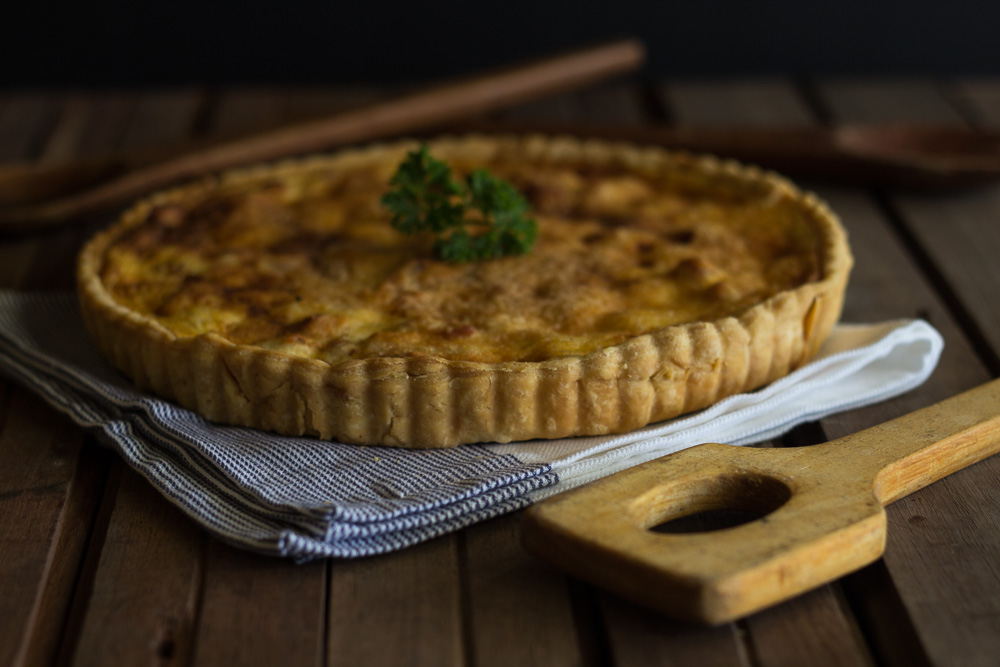
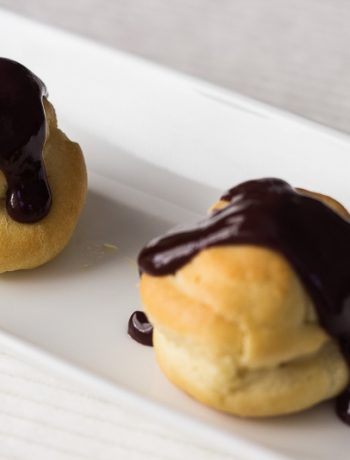
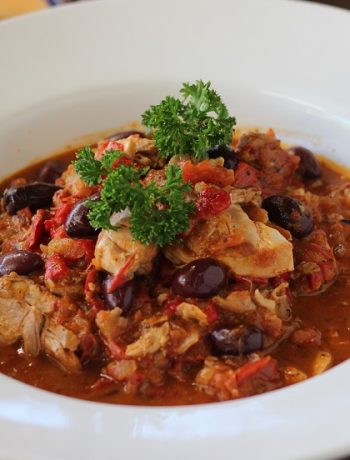
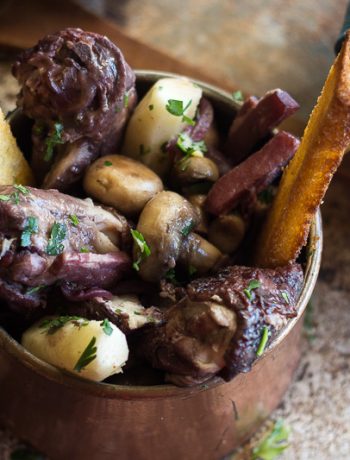
45 Comments
Joanne T Ferguson
January 12, 2014 at 7:52 pmG’day Fran! Love recipe and love your step by step photos! Inspiration to me, true!
Wish I could come through the screen and try some right now too!
Cheers! Joanne
Fran
January 13, 2014 at 8:45 amThanks Joanne. Now I’m off to have at look at your new ‘ThermoFun’ post!
John@Kitchen Riffs
January 13, 2014 at 7:38 amHow I envy you your Cordon Bleu experience! A quiche is pretty easy to make, unless, of course, you’ve never made one before! I remember struggling a bit with the crust the first couple of times I made one. Which reminds me that it’s been years since I’ve made one. And I don’t often see them on restaurant menus any more. Definitely a dish worth bringing back. Thanks for this.
Lorraine @ Not Quite Nigella
January 14, 2014 at 9:45 amI used to not like this quiche because the only experience I had of it was the frozen variety when I was a teen but a fresh home made version is gorgeous! 😀
Fran
January 14, 2014 at 7:05 pmAh, yes, I also remember those frozen quiches- the crust was as hard as rocks!
GourmetGetaways
January 15, 2014 at 10:11 amI have made quiche Lorraine so many times, but never from a recipe! I can see a lot of subtle differences in the way I make mine to this recipe so I am really curious to try the “proper” version! Thanks for sharing!
Fran
January 19, 2014 at 6:26 pmDoing the pastry the ‘proper’ French way takes more time, but is definitely worth the effort!
Juliana
January 16, 2014 at 6:56 amOh Fran, you make it look so easy that I am tempted to try to make the crust myself…
I love quiche, but always afraid of the crust, therefore just go for frittata, but I love a good flaky crust.
Thanks for the recipe and hope you are enjoying your week my dear 😀
Stephanie
May 14, 2020 at 10:43 amHi Fran,
I recently bought a Chasseur enameled stoneware flan dish. Is it possible to bake a quiche in it and how will the dish affect the cooking time, temperature and end result? Thank you
Fran Flint
May 14, 2020 at 11:16 amThank you Stephanie for your comment. I think using an enamel Chasseur flan dish would be perfect for your quiche. I believe this dish has ‘fluted’ ridges around the edges of the dish. So you would drape the dough around the dish leaving an overhang of around 2 cms. Then use a rolling pin to roll over the rim of the dish, to trim the dough. I need to repair some of the images of this technique on my blog- they are not showing up. With your Chasseur enamel dish, you would bake your quiche the same: blind bake for about 15 minutes, then bake another 30-40 minutes with the ‘custard’. Let me know how your quiche turns out!
Louisa
January 16, 2014 at 8:28 pmI ADORE Quiche Lorraine. I’ve recently moved back from France after a few years of living there and struggled to walk past a boulangerie that made it without buying a sneaky slice or two. Definitely my addiction! Love making them too, usually for a family gathering or party as I can’t be trusted on my own not to polish the lot off.
Joanne
January 16, 2014 at 11:08 pmThis is a beautiful pie crust tutorial! And one that I definitely needed since i usually use the food processor method to make it!
Donalyn@The Creekside Cook
January 18, 2014 at 5:51 amThank you for the reminders about classic techniques – interesting how this crust is made, when we are so often told to avoid excess handling these days. I will have to give this one a try!
Rachel
January 19, 2014 at 6:36 amThis quiche looks absolutely delicious, Fran. I’m not too good at making pastry so I am definitely going to try your tips to make mine better. 🙂 xx
Anneli Faiers
January 20, 2014 at 5:40 amClassic French deliciousness! As always, yours looks wonderful. Fabulous pastry 🙂
Nami | Just One Cookbook
January 29, 2014 at 3:10 amWe’re so lucky to get this recipe from you! Saving it. I really appreciate your step by step tutorial on the quiche. I never thought of making Quiche Lorraine at home, but it sounds much more accessible having your tutorial around!
Claire @ Simply Sweet Justice
February 3, 2014 at 1:32 pmYour tutorial is so helpful, Fran! One day, I hope to take classes at Le Cordon Bleu!
Aaron D'Costa
November 6, 2014 at 10:26 pmHeyy!
Can I use heavy cream or heavy whipping cream instead of thickened cream?
Fran
November 7, 2014 at 12:38 amHi Aaron, yes, you can use heavy cream or heavy whipping cream for the recipe. They are both the same thing as ‘thickened cream.’ Hope you enjoy the recipe!
Sigrun Isdal
December 3, 2014 at 10:33 amI have never before made Quiche Lorraine but your recipe is so good, easy to follow the step by step. Enjoyed making the pastry, turned out perfect and the filling was delicious! Will be making this at least once a month, excellent both hot and cold.
Fran
December 3, 2014 at 10:52 amThanks for your comment, Sigrun. I’m glad your quiche turned out well!
Jay Kay
December 29, 2014 at 11:54 amHey Fran, great instructions, thank you! Can you tell me the size of the quiche pan used please?
Fran
December 29, 2014 at 2:34 pmHi Jay, thanks for stopping by. For this recipe I used a 9 inch (23 cm) quiche pan. I hope you enjoy the recipe!
Jacinta
May 20, 2015 at 1:26 pmThis was such a great tutorial to follow mine came out perfect and it is tge first time I have made a quiche. Thank you. My daughter is such a fussy eater and she gobbled this up and wanted more I added broccoli in there as well and She didn’t mind at all. ☺
Fran
May 20, 2015 at 8:28 pmThank you so much, Jacinta, for your comment. I’m glad your quiche turned out well!
robert j. walters
August 23, 2015 at 10:35 pmmy heritage is from the Alsace and Lorraine area and across the river in the Saarland … Thank You for the authentic French recipe for Quiche Lorraine !!! … Which wine would you serve with it ???
Fran
August 24, 2015 at 1:00 pmRobert, thanks so much for stopping by! I would serve this quiche with a white wine- either chardonnay or sauvignon blanc. Riesling is also OK but it’s a bit too dry for me. I hope you enjoy the quiche!
Mimi
June 23, 2017 at 11:10 amBeautiful! I love your pie crust tutorial. I thought real quiche Lorraine didn’t have bacon, but my mother, who is from Nancy, in the province of Lorraine, always used it. So a quiche to me has bacon and cheese in it! Love yours.
Fran
June 23, 2017 at 5:29 pmMImi, thanks so much for your comment. You must have grown up with some good French cooking in your house!
Rebecca
July 18, 2018 at 2:06 amHow thin should the pastry be when you roll it out?? Like the thickness of a £1 coin??
Fran Flint
July 18, 2018 at 9:34 amRebecca, thanks so much for stopping by my blog! Yes, the thickness of a £1 coin sounds about right for the quiche crust, which is about 3 mm thick. Let me know how your quiche turns out!
Rebecca
July 19, 2018 at 7:52 amThank you so much for replying! I was sure you was not going to reply because this is quite an old post so thank you 🙂
I’m sorry, I accidentally sent my comment twice :/ I did add another question onto it though. I just thought I’d mention it in case you missed it
I will definitely tell you how my quiche turns out being that I’m rubbish at pastry 😉
Rebecca
July 19, 2018 at 7:41 amHow thin should the pastry be when you roll it out?? Like the thickness of a £1 coin?? Also what is “speck” bacon?? Is it bacon lardons??
Fran Flint
July 19, 2018 at 8:32 amRebecca, yes, speck is like a bacon lardon. It is ham with a significant layer of at included. You can see photos of speck here: https://stock.adobe.com/hk/search?k=speck
Rebecca
July 20, 2018 at 12:18 amThank you for answering my questions. I have just 1 more question though. Where would I find speck in england?? Do you think a good butcher would have it for me??
Fran Flint
July 20, 2018 at 11:21 amYou could try places that sell cured meats such as sausages and ham. Prosciutto can also be a substitute for speck. If you can’t find speck, I would just use regular bacon (or smoked ham) in the quiche recipe- just cut off some of the fat from the bacon and brown it before adding it to the quiche. Good luck!
Rebecca
July 21, 2018 at 10:14 amOkay I think I’ll try and just use some smoked bacon lardons, thanks so much for answering all my questions 😊
LisaLeah
July 15, 2019 at 12:40 pmI tried this recipe last night using Gluten Free Flour (Nodo brand) and it worked a treat! So much so, my husband who has lived in France said it was just as good as the quiche he would buy in the boulangerie (and didn’t even notice the change of flour)! I used Gruyere cheese and spinach but other than that followed your recipe. Honestly I have never made pastry before, so your instructions were great. Thank you.
Fran Flint
July 15, 2019 at 1:56 pmLisaleah, thank you very much for your comment- I’m so glad the recipe turned out well for you!
Amanda
August 12, 2020 at 5:10 pmI randomly Googled “quiche recipe” and found yours to be interesting as it’s done the traditional way. I made it with bacon, mushrooms and spinach. When I took it out of the oven, it took my breath away! It was so beautiful and perfect. And it tasted so good as well. This was my first time making quiche and yours will be the only recipe I’ll be using from now. Thank you so much for sharing your amazing recipe.
Fran Flint
August 13, 2020 at 3:37 amAmanda, thanks so much for your nice words! I really appreciate it!
Minih
August 18, 2020 at 10:15 pmExcellent quiche recipe. Reminds me of quiche I had in Paris. Few questions: 1) when do you add the salt to the pastry? 2) should I use salted or unsalted butter? 3) how brown should the crust be after the blind bake? (I’ve read that it should be baked on the bottom rack for 20-30 mins before the filling) 4) how thick should my pasty be? 5) when do add the nutmeg? 6) how do you know when the quiche is cooked? (I’ve read it should be slightly under done and jiggly). Thank you!!! Appreciate all the photos and insights.
Fran Flint
August 19, 2020 at 3:45 amMinih, thanks very much for your comment. Here are the answers to your questions: 1) Add the flour and salt together in the bowl at the beginning.. 2) I usually use salted butter because it always yields the right amount of ”saltiness’ to the recipe (for my taste) If you are using unsalted butter, then increase the amount of salt to say 1 teaspoon of salt. 3) After the blind baking, the crust should be a light-brown biscuit color. I always blind-bake using the middle rack in the oven. 4). The rolled-out dough should be about 1/8 inch thick. 5) Add the nutmeg along with the cream/milk and eggs. 6) Your quiche will be done when you touch the custard and it feels firm to the touch (but not hard). I appreciate your questions and I will now to try to beef-up my recipe directions a bit more!
Marianne
December 4, 2020 at 1:49 pmGreat and easy to follow instructions especially with the associated photos. However when I read “leave 2 cm margin larger than the quice mould” – my query is how big was the quiche mould? 🙂
Fran Flint
December 5, 2020 at 10:40 amMarianne, thanks so much for stopping by my blog. My quiche mould (pan) was 9 inches wide or 23 cms.